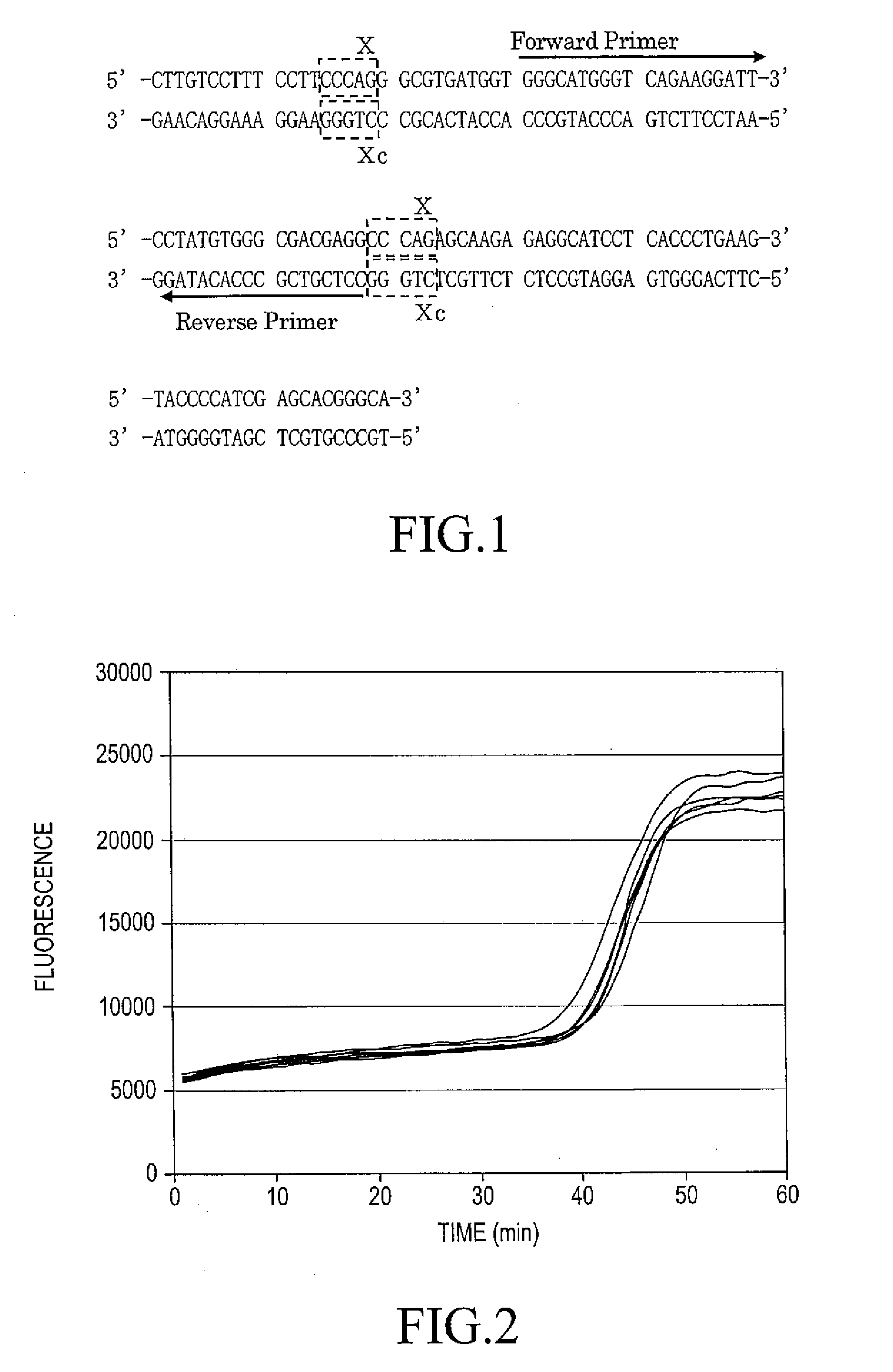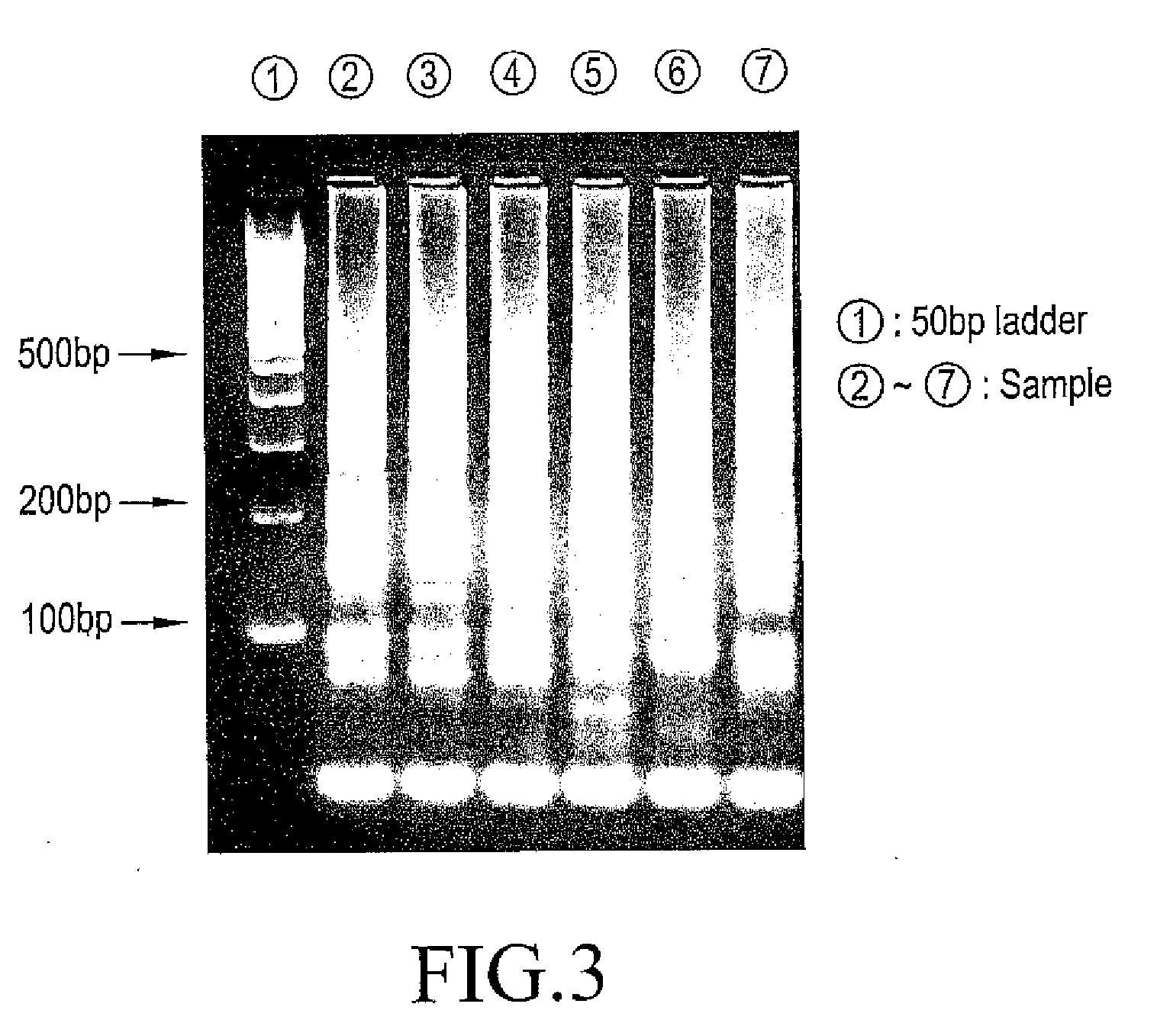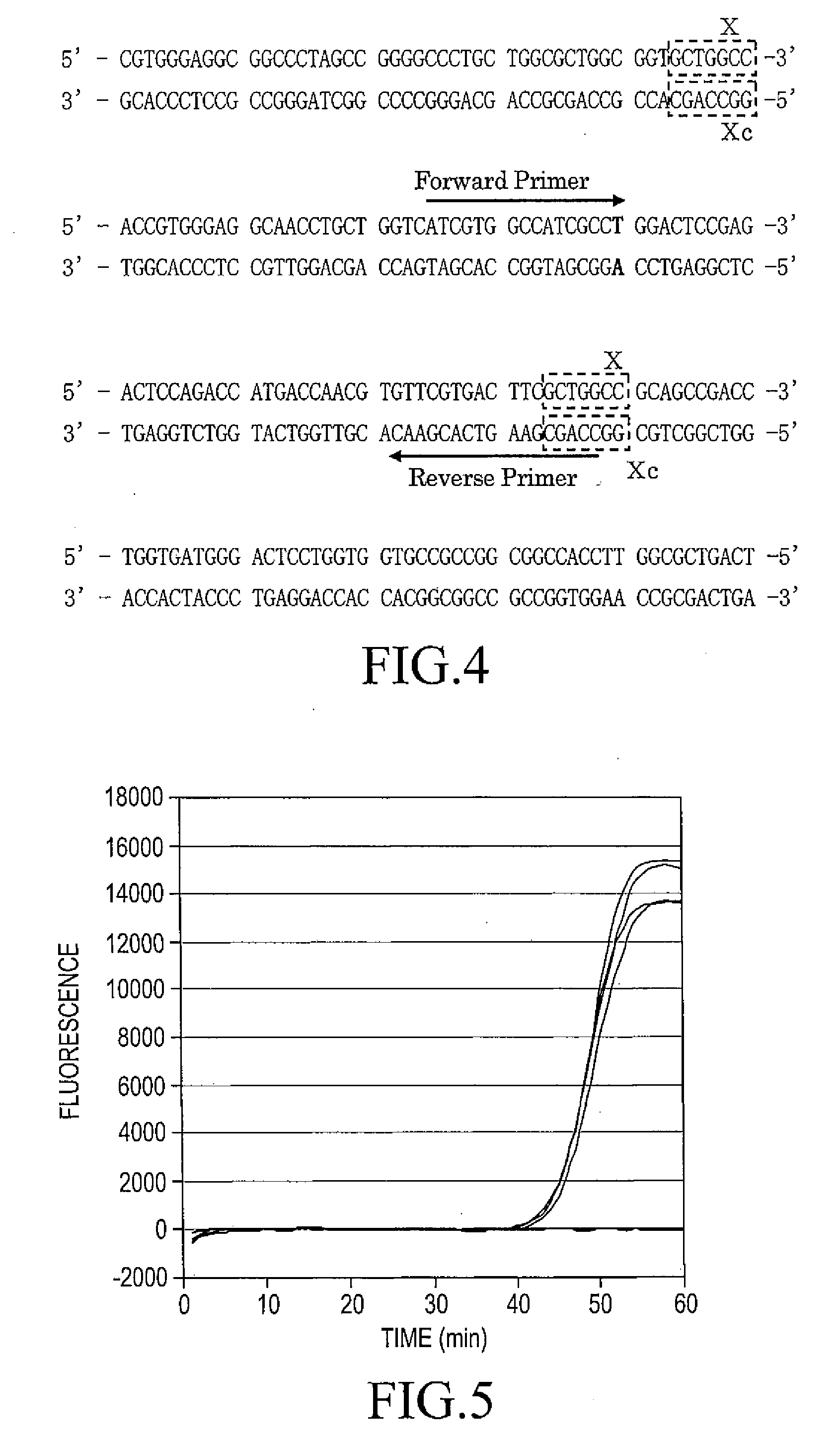Nucleic acid amplification method
a technology of nucleic acid and amplification method, which is applied in the direction of fermentation, biochemistry apparatus and processes, microbiological testing/measurement, etc., can solve the problems of high cost, high cost, and high cost, and achieve high amplification efficiency
- Summary
- Abstract
- Description
- Claims
- Application Information
AI Technical Summary
Benefits of technology
Problems solved by technology
Method used
Image
Examples
example 1
Nucleic Acid Amplification Reaction
(1) Preparation of Nucleic Acid Sample Solution Containing Target Nucleic Acid Fragment
[0108]3.0 ng of Human Genomic DNA (produced by Clontech) was heated at 98° C. for 3 minutes to be single-stranded, and a sequence in a β-actin gene was then amplified under the following conditions.
[0109]Primers were designed using a β-actin gene as a target. Each primer sequence is as shown below.
Primer (1) (Forward primer):5′-GGGCATGGGTCAGAAGGATT-3′(SEQ ID NO: 1)Primer (2) (Reverse primer):5′-CCTCGTCGCCCACATAG-3′(SEQ ID NO: 2)
[0110]Details of the positional relationship of the aforementioned primers to the β-actin gene are as shown in FIG. 1.
[0111]In FIG. 1, the sequence X is 5′-CCCAG-3′, and the sequences X are present at a position which are apart from each other by 54 nucleotides. The primer (1) is designed in a region which is sandwiched by the a 5′ terminal nucleotide of the 5′-side sequence X and a 3′ terminal nucleotide of the 3′-side sequence X, and the...
example 2
Electrophoresis of Amplified Products
[0116]Electrophoresis was performed at 100 V for 60 minutes using 3 wt % agarose gel and 0.5×TBE buffer (50 mM Tris, 45 mM Boric acid, and 0.5 mM EDTA, pH 8.4). The results are shown in FIG. 3. The electrophoretic patterns were almost uniform at N=6, and thus it was found that the amplified products were obtained based on the same reaction mechanism.
example 3
Cloning of Amplified Products
[0117]After completion of the electrophoresis, gel of the region of 200 bp or less was cut out, and DNA contained in the gel was then recovered using QIAEX II (manufactured by Qiagen).
[0118]The recovered DNA was incorporated into a vector using TOPO TA Cloning Kit (manufactured by Invitrogen), and Escherichia coli was then transformed with the vector. The transformed Escherichia coli was cultured in an LB medium containing ampicillin.
[0119]Thereafter, plasmid DNA was recovered from the cultured Escherichia coli, using QIAprep Miniprep (manufactured by Qiagen).
[0120]The recovered plasmid DNA was sequenced to determine the nucleotide sequence thereof. An M13 Reverse Primer was used as a primer.
M13 Reverse Primer5′-CAGGAAACAGCTATGAC-3′(SEQ ID NO: 3)
[0121]As a result of the sequencing, it was found that the following three types of amplified products were present.
(1)(SEQ ID NO:4)5′-GGGCATGGGT CAGAAGGATT CCTATGTGGG CGACGAGG-3′3′-CCCGTACCCA GTCTTCCTAA GGATACAC...
PUM
| Property | Measurement | Unit |
|---|---|---|
| temperature | aaaaa | aaaaa |
| carbon number | aaaaa | aaaaa |
| temperature | aaaaa | aaaaa |
Abstract
Description
Claims
Application Information
 Login to View More
Login to View More - R&D
- Intellectual Property
- Life Sciences
- Materials
- Tech Scout
- Unparalleled Data Quality
- Higher Quality Content
- 60% Fewer Hallucinations
Browse by: Latest US Patents, China's latest patents, Technical Efficacy Thesaurus, Application Domain, Technology Topic, Popular Technical Reports.
© 2025 PatSnap. All rights reserved.Legal|Privacy policy|Modern Slavery Act Transparency Statement|Sitemap|About US| Contact US: help@patsnap.com



